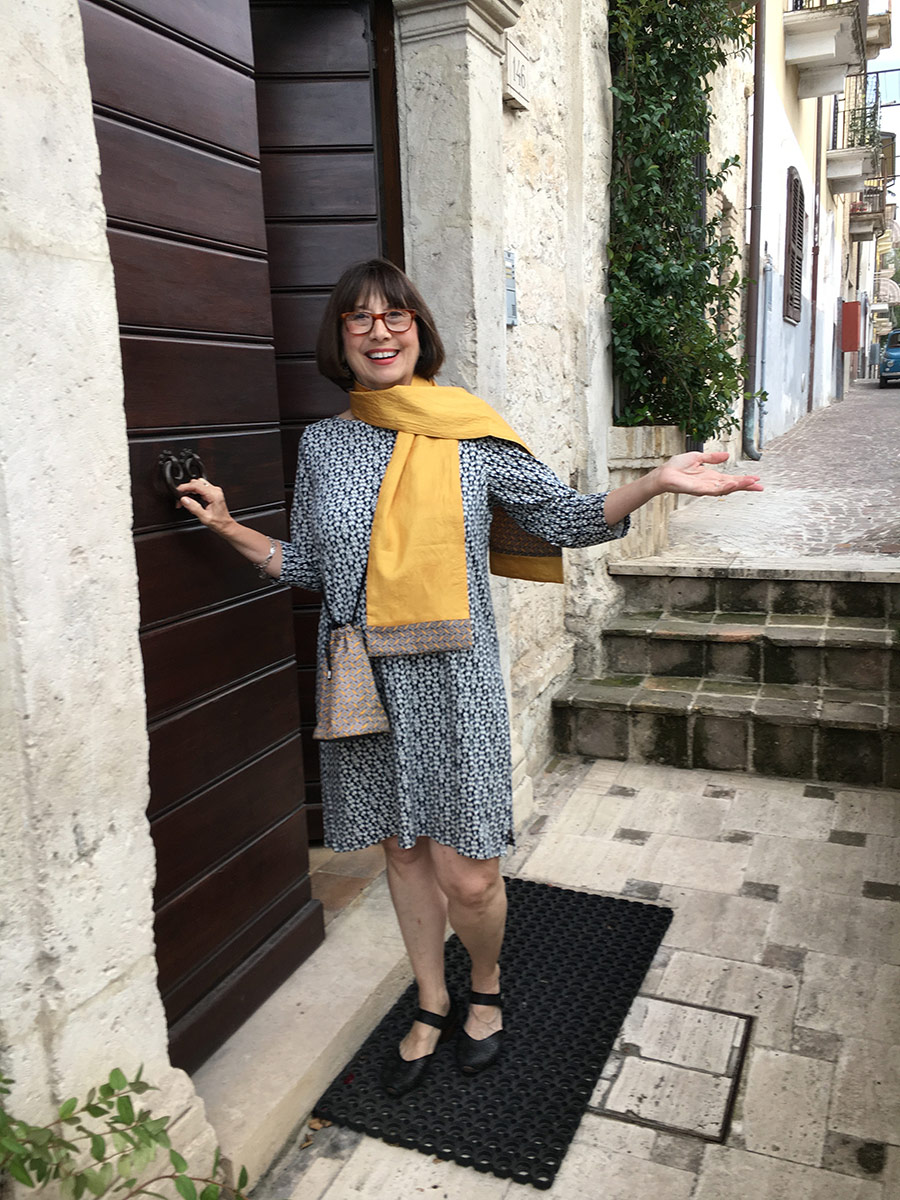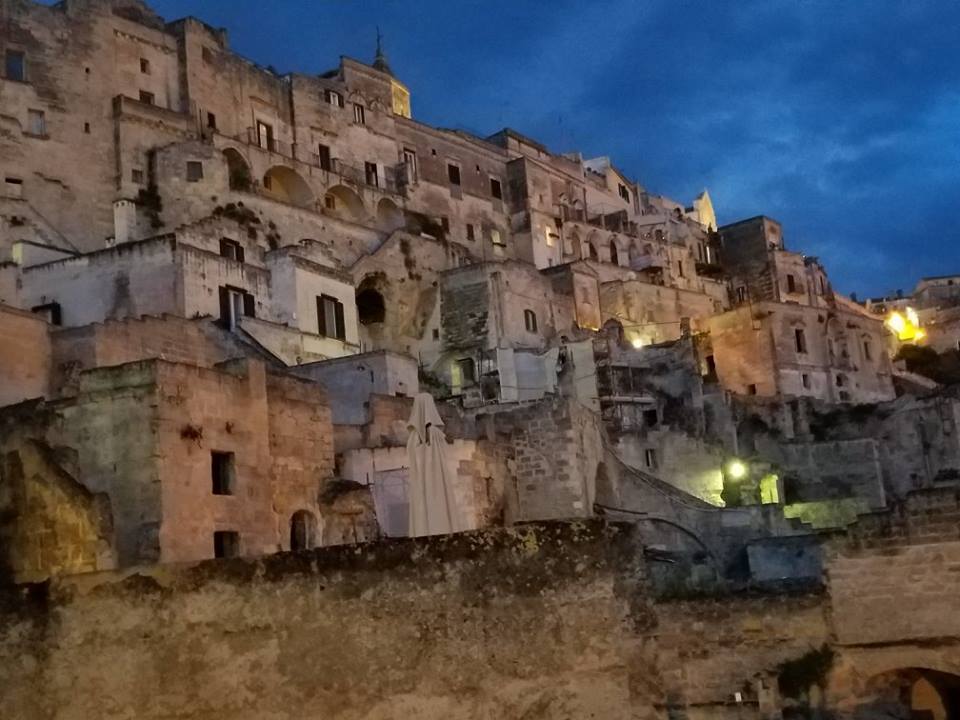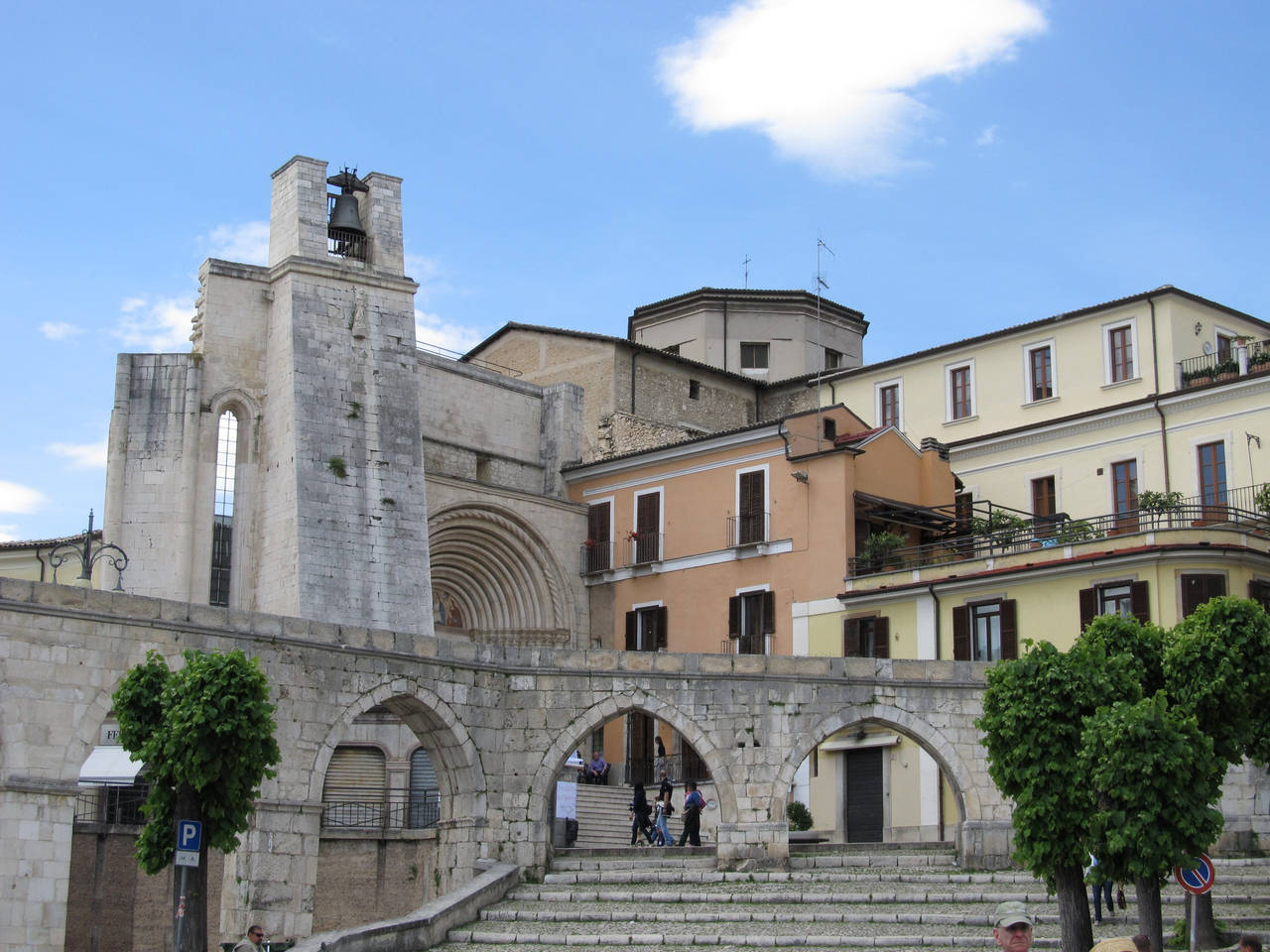Here’s an oldie but a goodie. Did La Befana come to your house this year? Now it’s time to take down the tree in the Dini-Jenkins house . . . Buon Anno a tutti!
When I was a kid, we celebrated Christmas on December 25. Santa Claus came down the chimney (I never knew how he got into our fireplace-less house) the night before and, since I was an only child, I awoke to boxes and boxes of joy. I loved it. And around 2:00 we ate the typical Italian-American Christmas uber-dinner: turkey with all the trimmings, lasagna and sauce (never “gravy” in my house, always sauce) that my father had slaved over for two days, an American fruit pie of some kind — and cannoli. And then my English-Irish mother, who would drive miles away to the only bakery she could find that made miniature Italian pastries, would bring out a tray of yummy rummy babas, eclairs, napoleans, cream puffs, sfogliatelle, ricotta tarts, nut horns and more. I just gained five pounds writing these things down. My grandfather would enjoy his whiskey-laced black coffee with two teaspoons of sugar, and all was right with the world.
But at some point during the festivities, my Italian family always mentioned “Little Christmas” in the Old Country, their voices a little wistful and their eyes a little misty. Okay, maybe that’s an exaggeration. But it always came up. Years later, I realized that this January 6 event was the “Twelfth Night” that Shakespeare wrote about. The Twelfth Day of Christmas. And years after that I put it together that Little Christmas was Twelfth Night was the Feast of Epiphany in the Christian calendar. The feast celebrating the arrival (finally!) of the Three Wise Men to the manger. So what? Well, in Italy — especially in the poverty-stricken southern part of Italy where my grandparents came from — there is a Christmas legend about all of this. The Legend of La Befana.
Today, Babbo Natale comes on Christmas Eve and does his happy-making work. But in the days of my grandfather’s generation, Italian kids mostly got their chance at some goodies on January 5, the eve of Epiphany. That’s when La Befana, an ugly old witchy-looking woman, would board her broomstick and visit the homes where children lived.
Legend has it that the Three Wise Men who were following the star, looking for the baby Jesus, stopped at the old woman’s house while she was cleaning. They asked for food and water and a place to stay, and also asked if she would like to join them on their quest for the new King. Suspicious, she said “no,” making an excuse about having too much work to do. They left, and very soon she felt a twinge of regret. Perhaps she should have followed them after all. She gathered up some meager gifts and ran out of the house in search of the men, but to no avail. She could not find them anywhere, even though she was trying to follow the star they’d told her about.
Realizing the opportunity that she had probably missed, the old woman flies on her broomstick to this day, all over the countryside, visiting homes with children and filling their stockings with gifts. Oranges, candy, cakes, nuts and small toys… for the good children. The naughty children get lumps of coal. (My parents actually did this to me once and it has scarred me for more than 50 years . . . but I digress.) She still flies because she is still looking for the Christ Child, and seeks it in the face of every child she meets. And children still hang up their stockings on January 5 and still sing songs to La Befana (from Epifania, Italian for Epiphany) the good witch of Italy.
If you’re lucky enough to be in Italy during the holidays, you’re likely to see a Befana toy fair or two. There’s a huge one in Piazza Navona in Rome, where stall after stall tempts browsers with candy and toys (even chunks of black sugar made to look like coal). And children leave letters to La Befana in a manger, telling her what they’d like her to bring.
Leave it to us Italians to figure out how to get a double dose of holiday gatherings, giftings and mealtimes in a single twelve-day period! What about you? Any “Befana” stories to tell? How was Little Christmas celebrated inyour Italian family?
Buon viaggio!

Linda Dini Jenkins is a card-carrying Italophile, travel planner, freelance writer, and amateur photographer. Travel is her passion, so writing about her travels just comes naturally. She hopes all her travelers find a way to express their joys, surprises, and fears as they travel and gives every traveler a nifty journal to help smooth the way. Learn more…





Recent Comments